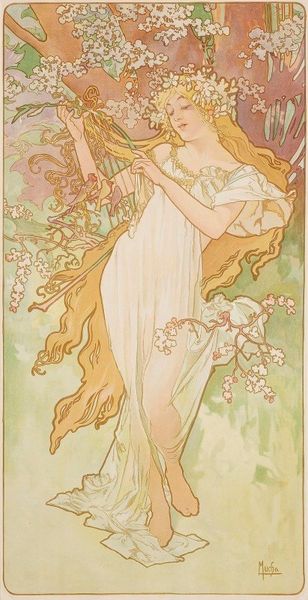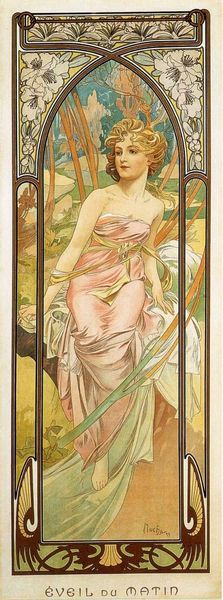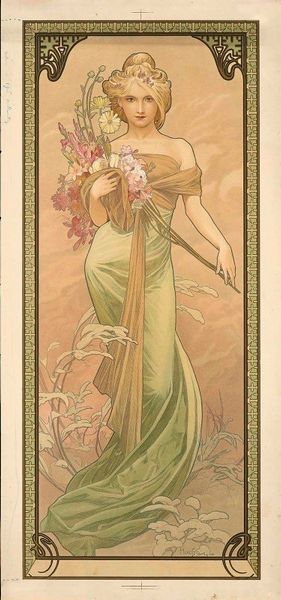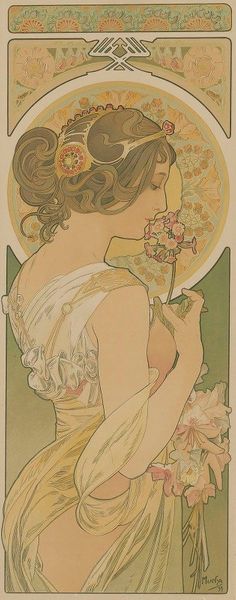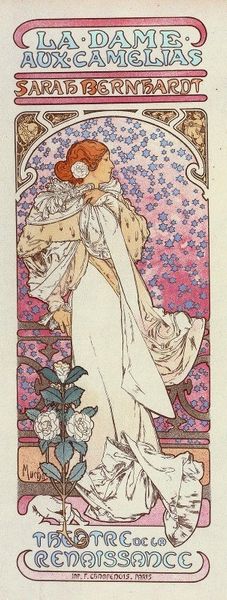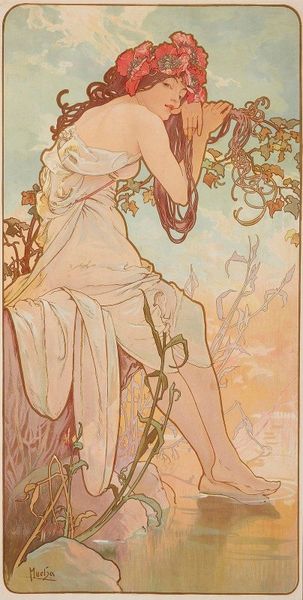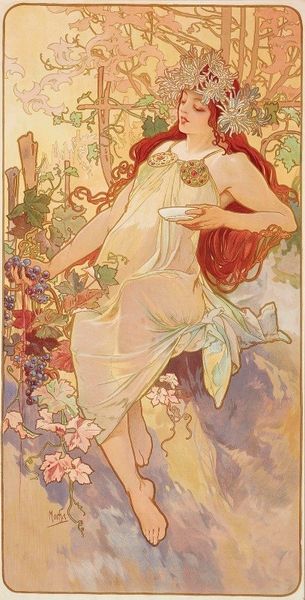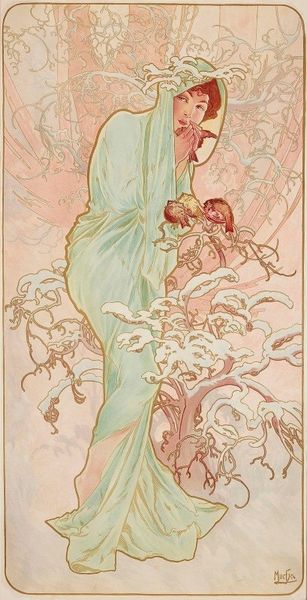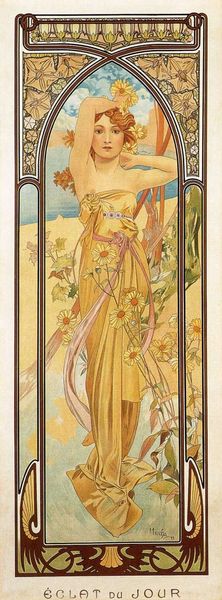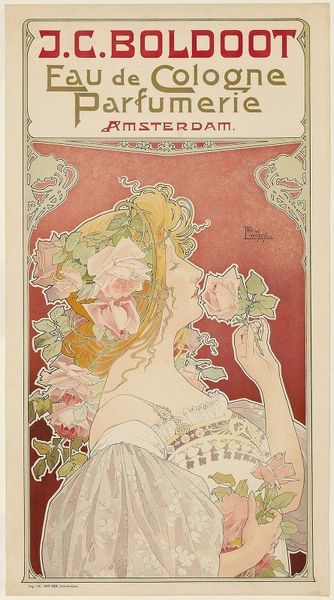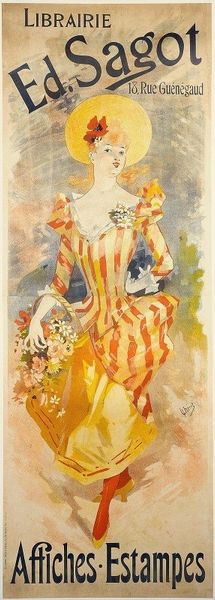
painting, print
#
portrait
#
art-nouveau
#
painting
# print
#
landscape
#
caricature
#
figuration
#
art nouveau
#
decorative-art
Copyright: Public Domain: Artvee
Editor: Here we have Alphonse Mucha's "Summer" from 1900, seemingly a painting or a print. It features a woman in a field, evoking a real sense of warmth and serenity. What do you make of this piece, especially in terms of its visual elements? Curator: I am immediately struck by the composition, which hinges on a clear structural dichotomy. Notice how the artist employs the frame – an external and internal one – as a pivotal architectural component that dictates the rhythm and balance. How would you characterize the relationship between the figure and the surrounding decorative field? Editor: I see how the flowing lines of her dress echo the swaying grass, blurring the boundary between her and the landscape, almost like she's one with nature. The frame is highly stylized, acting like a proscenium arch. But it is also kind of a flat pattern. Curator: Precisely. Consider how the curvature of the frame complements the linearity of the stalks, creating an opposition of formal vocabularies that serve to delineate and define the visual field, bringing to attention semiotic possibilities. The pale coloring also enhances flatness; it is hard to tell if the image is intended to render the woman realistically in space or suggest a two-dimensional likeness, much like on the surface of a ceramic vase. What else stands out to you? Editor: The color palette! It’s very muted, lots of pastels and earth tones, which gives it a dreamy, idealized feel. And the detail in the hair and the floral motifs is incredible. I now understand it’s far more than just a portrait; it’s an exercise in structure. Curator: Yes. It underscores the decorative and conceptual depth inherent in Mucha’s strategic organization of line, form, and color, illustrating that it is not only evocative, but is rigorously structured. Editor: Thinking about this, I’m seeing Mucha in a completely different light, and will look more deeply into the construction of what appears on the surface. Thanks!
Comments
No comments
Be the first to comment and join the conversation on the ultimate creative platform.


